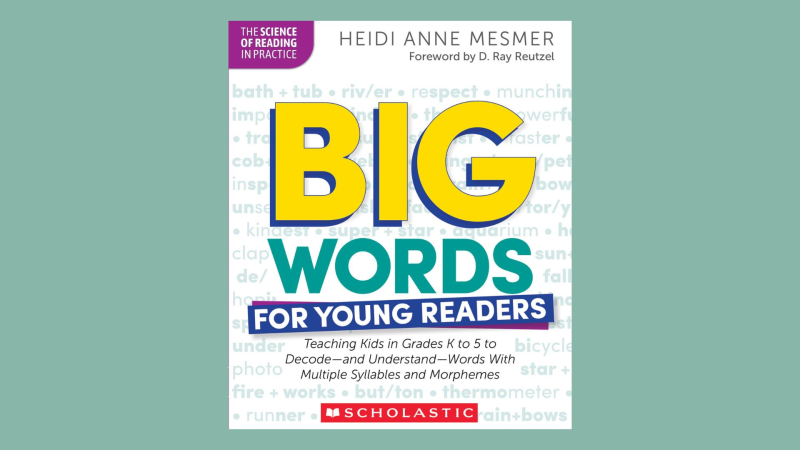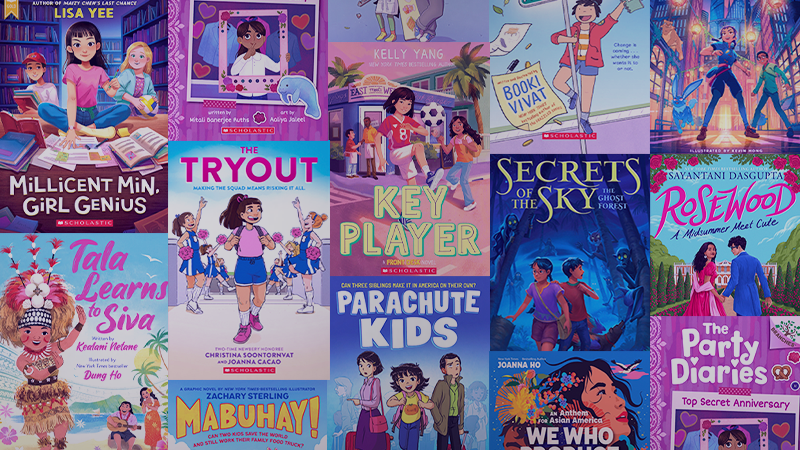This post is part of an ongoing series exploring new findings from the Scholastic Teacher & Principal School Report: 2nd Edition. This national survey of 4,517 public school Pre-K–12 educators, conducted by YouGov, focuses on critical issues affecting schools and districts across the country. Author and literacy expert Pam Allyn discusses the social-emotional benefits of reading and why this is so critical right now.
This is a profound moment, as we as educators, teachers, parents and caregivers send our precious ones onto screens and into classrooms in these days of change and disruption. Our children have faced significant challenges and traumas over these past many months.
Yet, there is one way human beings find deep comfort, and that is through the power of stories. Reading can be an extraordinary lifeline—to help all students feel a sense of belonging, to feel less alone, and to work on their journeys of becoming passionate, thoughtful, curious people in the world in spite of the challenges these days have brought to them. This is true not just for our children but for all of us too who care for and love the children we serve. Reading, and stories themselves, are a lifeline for all of us.
As the great Dr. Rudine Sims Bishop has taught us, books that represent a wide range of thought, ideas, perspectives, cultures and languages can serve as windows showing children glimpses into new worlds of possible that may be different than their own, or sliding glass doors allowing them to use their imaginations to step into new realities, to create a better world. Books can also serve as mirrors reflecting children’s own lives and experiences, struggles, hopes, dreams, and joys. In the words of poet Natalie Diaz, “Reading is a way of practicing the imagination necessary to broaden our capacities to understand ourselves and others.”
Educators illustrate the power of reading in the Scholastic Teacher & Principal School Report: 2nd Edition, fielded between December 9, 2019 and January 31, 2020. They point to the top social-emotional benefits of reading fiction and nonfiction books as: helps students understand people that are different than them (83%), develop empathy (81%), and see themselves in characters and stories (81%). Reading to and with our children connects all of us emotionally, creating a shared reading experience and a larger sense of community fueled by literacy.
As many students nationwide grapple with new routines and rituals during distance learning, or physical separations in their classrooms due to COVID-19 constraints, these benefits are particularly poignant, profound, and powerful for the mind and spirit.
A national survey from Youth Truth, collected May–June 2020, found that 50% of students in grades 5–12 report feeling depressed, stressed or anxious as an obstacle to at-home learning. Reading stories as tools of comfort can help students connect to classmates in new ways. It can also help connect their own lives to the stories they read, build relationships with teachers, and by sharing what they’re reading, help to build a climate of social-emotional learning that feels safe, happy, and joyful.
Children and parents similarly recognize the importance of reading for personal growth and development, as we saw in the Scholastic Kids & Family Reading Report™: 7th Edition. Seventy-four percent of children say that reading fiction and nonfiction helps them understand the world, and more than half of both parents and children (55% of parents of children ages 6–17, 53% of children ages 6–17) report that there have been times when a book helped them/their child get through a difficult time. In the same report, nearly all parents say they believe that characters in books can help their child develop the kinds of qualities they value and want to see (95%).
And it’s important to add that the social-emotional benefits of reading don’t stop with books themselves. The Teacher & Principal School Report: 2nd Edition reveals that educators also agree that using books, stories, and articles as a starting point is a powerful way to engage students in important conversations (98%). Finding age-appropriate content using resources such as the @ScholasticBookshelf can help us as parents, caregivers, and educators tackle big and deeply important topics with our kids. The Scholastic Bookshelf shows us ways to talk about these topics with our children using powerful literature to guide us and to make those conversations easier to have. On Instagram, this tool provides access to excerpts from over 60 stories, covering many topics of profound importance to all of us—civil rights, empathy, and free speech, to name a few—designed to help create meaningful, safe spaces for shared learning moments with students of all ages. These days, I am frequently reading aloud to and with students via Zoom and in these conversations, whether through the chat bar or talking back and forth, we are using texts to guide us, help shape our thinking, help navigate the difficulties of these times, and transcend those difficulties with big ideas our students have for making and creating a better world.
There are three key ways to help children fall in love with reading as a life force: time for independent reading in which they get to make choices about what they read; read-aloud time when reading together in community becomes a clear priority and creates a haven for discussions that matter; and small group work around texts that matter, to explore, grapple with, and delight in the work of becoming a reader.
Reading is powerful in that it connects academic and social-emotional development. Academic achievement and social-emotional wellbeing are shown through research and practical application to be closely intertwined. Social-emotional wellbeing is a lever that drives achievement. In fact, findings from the Scholastic Teacher & Principal School Report: 2nd Edition show that 98% of educators agree that for students to reach their highest academic potential, their social-emotional needs must be met, and nearly all educators (97%) agree that literacy is critical to students’ health and emotional wellness.
As we all navigate this year together, let us continue to find inspiration more now than ever before in the stories that we read and share. Let us continue to support all students by surrounding them with the power of stories, whether in the form of books, articles, magazines, poems, letters, songs, comic books, graphic novels, series books, and more. These are stories and ideas that can and will nourish their spirits (and ours) and fuel their critical journeys to feeling better in a tough world—and to becoming lifelong learners, empathetic and caring humans, and world changers, even and especially in these challenging times.
Keep Reading: Don’t miss the other posts from this series! Click the links below to discover additional research from the Scholastic Teacher & Principal School Report.
- Reading Serves as a Critical Bridge to Stem Learning Loss by Dr. Karen Burke
- Teachers and Principals Reflect on COVID-19 and the Academic Year Ahead by Brittany Sullivan
- Professional Learning Trends for 2020 and Beyond by Dr. Carol Chanter
- What Teachers Want in Children’s Books by Deimosa Webber-Bey
Methodology: To see the full Scholastic Teacher & Principal School Report: 2nd Edition methodology, click here.





